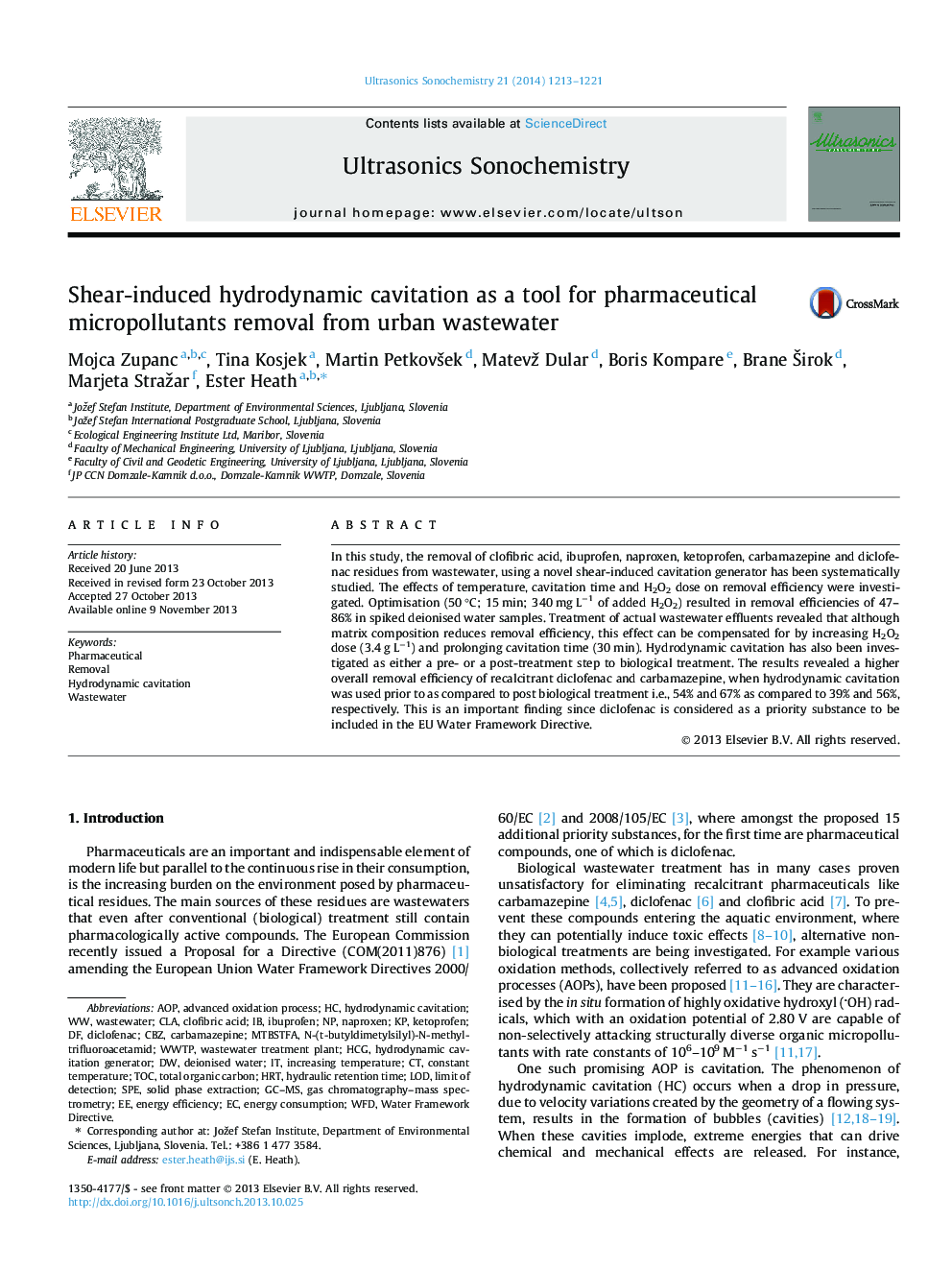| Article ID | Journal | Published Year | Pages | File Type |
|---|---|---|---|---|
| 1269856 | Ultrasonics Sonochemistry | 2014 | 9 Pages |
•Removal of pharmaceuticals from wastewaters by cavitation.•Shear-induced cavitation is more efficient than cavitation by Venturi.•Removals up to 79% in wastewater effluent.•Cavitation as a pre-treatment yields higher removal of pharmaceuticals.
In this study, the removal of clofibric acid, ibuprofen, naproxen, ketoprofen, carbamazepine and diclofenac residues from wastewater, using a novel shear-induced cavitation generator has been systematically studied. The effects of temperature, cavitation time and H2O2 dose on removal efficiency were investigated. Optimisation (50 °C; 15 min; 340 mg L−1 of added H2O2) resulted in removal efficiencies of 47–86% in spiked deionised water samples. Treatment of actual wastewater effluents revealed that although matrix composition reduces removal efficiency, this effect can be compensated for by increasing H2O2 dose (3.4 g L−1) and prolonging cavitation time (30 min). Hydrodynamic cavitation has also been investigated as either a pre- or a post-treatment step to biological treatment. The results revealed a higher overall removal efficiency of recalcitrant diclofenac and carbamazepine, when hydrodynamic cavitation was used prior to as compared to post biological treatment i.e., 54% and 67% as compared to 39% and 56%, respectively. This is an important finding since diclofenac is considered as a priority substance to be included in the EU Water Framework Directive.
